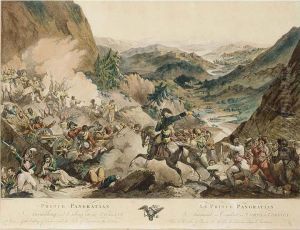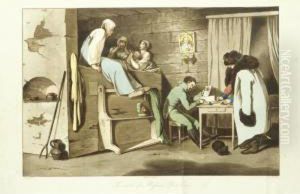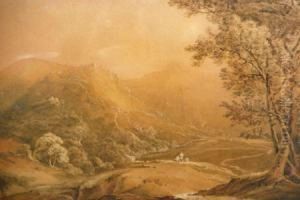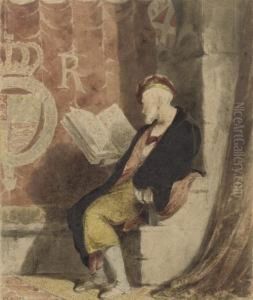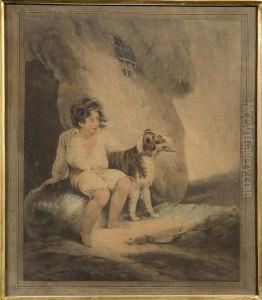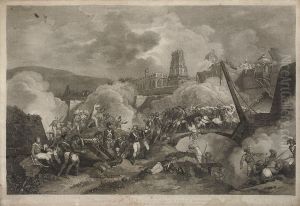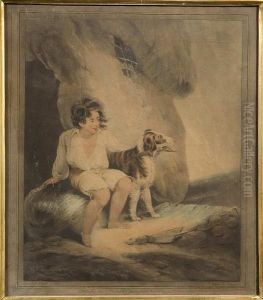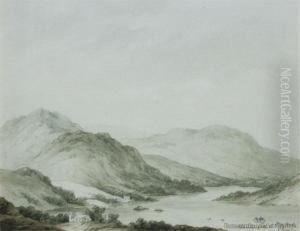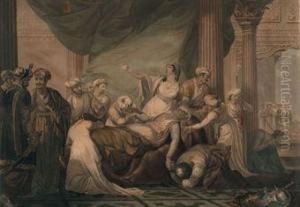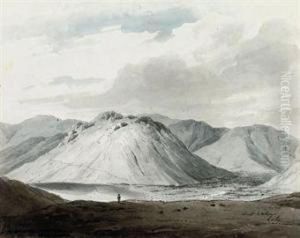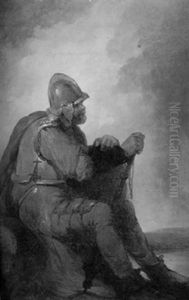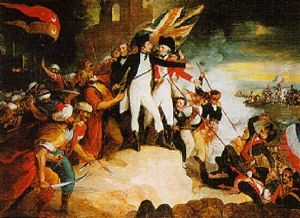Robert Ker Porter Paintings
Robert Ker Porter was a notable British artist, diplomat, and traveler, born on February 24, 1777, in Durham, England. He was part of an artistically talented family; his sisters Jane Porter and Anna Maria Porter were both successful authors. Porter showed an early talent for art, and by the age of 17, he had already exhibited at the Royal Academy. His speciality was painting large historical scenes, which were popular at the time.
Porter's most famous work is perhaps the mammoth canvas titled 'The Storming of Seringapatam' (1800), which depicts the final victory of the British over Tipu Sultan in India. This painting measured an astonishing 120 feet in length and was exhibited in London to great acclaim. His dramatic and large-scale approach to historical narrative painting was well-suited to the tastes of his patrons, who sought to glorify the British Empire through art.
Beyond his work as an artist, Porter was also appointed as a historical painter to Tsar Alexander I of Russia, a position that took him to St. Petersburg in 1804. During his time in Russia, he was involved in various diplomatic roles and traveled extensively, including to the Caucasus and Persia, where he was knighted by the Shah. His travels provided rich material for his paintings and later for publications based on his adventures.
Porter continued to work as a diplomat and held various posts, including British consul in Venezuela. He was known to have a keen interest in the chivalric customs of the past and often dressed in a style that reflected this fascination. He married the Russian princess Mary Alexeievna Shelekhov in 1811 and had two daughters.
Robert Ker Porter's contribution to the art world is noted for his large-scale historical canvases and his role in bringing the romantic spirit of the era to life. His work as a diplomat and traveler also contributed to cross-cultural exchanges during a time of empire and colonial expansion. He died on May 4, 1842, in St. Petersburg, Russia, leaving behind a legacy that intertwined art, history, and diplomacy.
